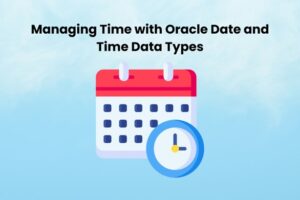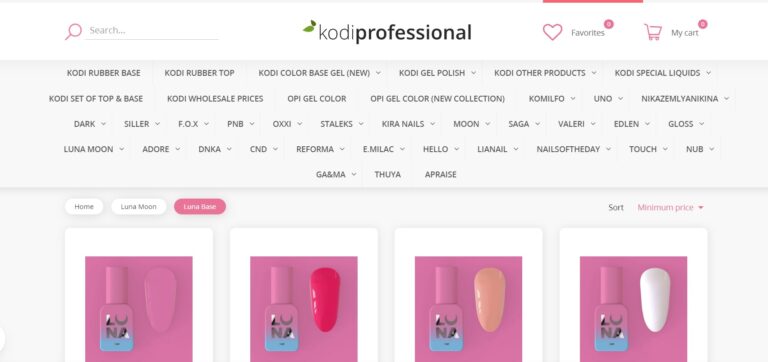Introduction to the importance of data security
Data security is a paramount concern in today’s digital age. With the ever-increasing volume of sensitive user information being stored and managed online, protecting this data has become more crucial than ever before. In the realm of enterprise resource planning (ERP), NetSuite stands out as one of the leading platforms for managing business operations. But with great power comes great responsibility, especially when it comes to safeguarding user information within NetSuite users list.
In this blog post, we will delve into the world of NetSuite users list and explore common data security risks that can compromise user information. We will also provide you with essential steps to fortify your data protection measures within NetSuite, ensuring that your users’ valuable details remain secure from potential threats.
So, whether you are an existing NetSuite user or considering adopting this robust ERP solution for your organization, read on to discover how you can effectively protect user information and maintain a strong security posture in your NetSuite environment.
Understanding NetSuite and its users list
NetSuite is a cloud-based business management software that offers a wide range of functionalities to help companies streamline their operations. From financial management to customer relationship management, NetSuite provides a comprehensive solution for businesses of all sizes.
One important aspect of using NetSuite is the management of user information. User lists within NetSuite contain valuable data such as usernames, passwords, and contact details. Protecting this information from unauthorized access is crucial for maintaining data security.
However, there are common risks associated with storing user information in NetSuite. For example, weak passwords can make it easier for hackers to gain unauthorized access to accounts. Similarly, outdated software and systems may have vulnerabilities that can be exploited by cybercriminals.
To protect user information in NetSuite, it is essential to implement strong password policies. This includes requiring users to create complex passwords and regularly updating them. Additionally, enabling two-factor authentication adds an extra layer of security by requiring users to verify their identity through another device or method.
Regularly updating software and systems is also crucial in preventing security breaches. Software updates often include patches that address known vulnerabilities and strengthen overall system security.
Conducting regular security audits helps identify any potential weaknesses or areas where improvements can be made in protecting user information. These audits should include reviewing access controls, monitoring system logs for suspicious activity, and ensuring compliance with relevant data protection regulations.
Training employees on data security best practices plays a vital role in protecting user information in NetSuite. Educating staff members on how to recognize phishing attempts or other social engineering tactics helps reduce the risk of human error leading to data breaches.
By understanding the importance of data security within NetSuite’s users email list and implementing these steps for protection, businesses can safeguard sensitive information from potential threats while utilizing this powerful business management platform effectively.
Common data security risks for NetSuite user information
NetSuite, being a cloud-based business management software, is widely used by organizations to streamline their operations and manage critical data. However, with the rapid growth of cyber threats, it’s crucial to understand the common data security risks associated with NetSuite user information.
One of the major risks is unauthorized access to sensitive data. Hackers may attempt to gain entry into NetSuite accounts by exploiting weak passwords or loopholes in security measures. This can lead to unauthorized viewing or manipulation of valuable user information.
Another risk is phishing attacks. Cybercriminals often send deceptive emails posing as legitimate entities and trick users into revealing their login credentials or other confidential details. Falling victim to such scams can compromise the security of NetSuite user information.
Data breaches are also a significant concern for NetSuite users. In some cases, malicious actors may target vulnerable systems or networks connected to NetSuite and gain access to sensitive user data like financial records or customer information.
Furthermore, insecure network connections pose another risk for NetSuite users’ personal information. If a network lacks encryption protocols or if employees use unsecured Wi-Fi networks while accessing NetSuite accounts remotely, it increases the likelihood of interception and theft of confidential data.
Inadequate employee training on data security practices poses a considerable risk. Lack of awareness about password hygiene, recognizing phishing attempts, and following secure browsing habits can make an organization more susceptible to cyberattacks targeting its NetSuite users’ information.
To mitigate these risks effectively and protect user information in NetSuite:
1) Implement strong password policies that require complex combinations of letters, numbers,
and symbols.
2) Utilize two-factor authentication (2FA) as an additional layer of security when logging into
NetSuite accounts.
3) Regularly update software applications and systems used within your organization,
including those connected with NetSuite.
4) Conduct regular security audits that identify vulnerabilities in your infrastructure
and address them promptly.
5) Train employees on best practices for data security, including recognizing and reporting
phishing attempts and practicing safe.
Steps to protect user information in NetSuite
Implementing strong password policies
One of the most important steps in protecting user information in NetSuite is implementing strong password policies. Passwords act as a first line of defense against unauthorized access to sensitive data.
First and foremost, it is crucial to enforce complex passwords that are not easily guessable. Encourage users to create passwords with a combination of uppercase and lowercase letters, numbers, and special characters. This helps increase the complexity of the password and makes it harder for hackers to crack.
Additionally, consider setting password expiration periods so that users are prompted to change their passwords regularly. This ensures that even if a password is compromised, it becomes useless after a certain period.
Another effective measure is implementing multi-factor authentication (MFA) or two-factor authentication (2FA). This adds an extra layer of security by requiring users to provide additional verification beyond just entering their password. Common methods include sending a code via SMS or using authenticator apps.
Furthermore, educate your employees about the importance of not sharing passwords with others or reusing them across multiple accounts. Using unique passwords for each account reduces the risk associated with credential-stuffing attacks.
By implementing strong password policies and educating your users on best practices, you can significantly enhance the security of user information within NetSuite. Remember: data protection starts with choosing secure passwords!
Utilizing two-factor authentication
In today’s digital landscape, securing user information is of paramount importance. One effective measure to enhance data security in NetSuite users’ mailing lists is by implementing two-factor authentication (2FA). This adds an extra layer of protection by requiring users to provide not just a password, but also a second form of identification before gaining access to their accounts.
Two-factor authentication works by combining something the user knows (such as a password) with something they have (such as a unique code sent via SMS or generated through an authenticator app). This additional step significantly reduces the risk of unauthorized access, even if passwords are compromised.
By enabling 2FA for NetSuite users, businesses can mitigate the potential impact of phishing attacks and brute-force attempts. It ensures that only authorized individuals with both the correct credentials and physical device can gain entry into sensitive information.
Implementing two-factor authentication in NetSuite is relatively straightforward. Administrators can enable this feature within the platform’s settings and customize it based on their organization’s needs. Users will then be prompted to set up 2FA during login setup or when logging in from new devices.
By utilizing two-factor authentication as part of your overall data security strategy, you add an extra layer of protection for your NetSuite users list. With hackers becoming increasingly sophisticated, it is crucial to employ robust measures like 2FA to safeguard valuable user information effectively.
Regularly updating software and systems
Regularly updating software and systems is a crucial step in ensuring the security of user information in NetSuite. With new vulnerabilities constantly being discovered, it is essential to stay up-to-date with the latest patches and updates for all software applications used within your organization.
Outdated software can often have weaknesses that hackers can exploit to gain unauthorized access to sensitive data. By keeping your systems updated, you are reducing the risk of falling victim to cyberattacks or data breaches.
It’s not just about updating your operating system and antivirus software; you should also pay attention to other applications such as browsers, plugins, and add-ons. These programs may have their own vulnerabilities that need to be addressed through regular updates.
By implementing an automated update mechanism, you can ensure that your software is always running on the latest version without requiring manual intervention from your IT team. This way, you minimize any potential lapses caused by human error or oversight.
In addition to patching vulnerabilities, regular updates also provide performance improvements and bug fixes which contribute to a smoother overall user experience. It’s a win-win situation: enhanced security alongside improved functionality!
Remember that cybersecurity threats evolve rapidly, so regularly updating your systems helps keep pace with emerging risks. Stay proactive in maintaining a secure environment for your NetSuite users’ information by prioritizing timely software updates throughout your organization.
Conducting regular security audits
When it comes to data security in the NetSuite users list, conducting regular security audits is an essential step. Regularly assessing the system’s vulnerabilities helps identify potential risks and areas for improvement.
During a security audit, various aspects of your NetSuite system are evaluated. This includes reviewing user access controls, monitoring activity logs, and analyzing any suspicious activities or breaches. By conducting these audits on a regular basis, you can stay ahead of potential threats and ensure that your user information remains protected.
One important aspect of a security audit is reviewing user permissions and access controls. It’s vital to ensure that only authorized personnel have access to sensitive data within NetSuite. By regularly reviewing and updating these permissions, you can mitigate the risk of unauthorized access or accidental sharing of confidential information.
Another area that should be assessed during a security audit is the effectiveness of your password policies. Are users required to create strong passwords? Is multi-factor authentication enabled? These are crucial questions to ask when evaluating the strength of your system’s password protection measures.
Additionally, a thorough review should be conducted on all software and systems integrated with NetSuite. Outdated or unsupported software versions can pose significant risks as they may contain known vulnerabilities that hackers can exploit. Keeping everything up-to-date ensures that you have the latest patches and improvements to protect against emerging threats.
Training employees on data security best practices should also be part of your regular security audits. Educating staff about phishing scams, social engineering techniques, and other common cybersecurity threats will help them better understand their role in maintaining data privacy within NetSuite.
By conducting regular security audits in NetSuite users email list environments, businesses can proactively address any vulnerabilities or weaknesses before they turn into major issues. Remember: safeguarding user information requires ongoing vigilance and continuous improvement!
Training employees on data security best practices
One of the most crucial steps in protecting user information in NetSuite is ensuring that employees are well-educated and trained on data security best practices. After all, even with the strongest software and systems in place, human error can still lead to costly breaches.
Here are some key areas to focus on when training your employees:
1. Phishing awareness: Teach your team how to identify phishing emails and other social engineering tactics used by hackers to gain access to sensitive information. Encourage them not to click on suspicious links or download attachments from unknown sources.
2. Password management: Emphasize the importance of using strong passwords and discourage them from reusing passwords for multiple accounts. Educate them about password hygiene, such as regularly changing passwords and avoiding common phrases or easily guessable combinations.
3. Secure file sharing: Train employees on secure methods of sharing files both internally and externally, such as utilizing encrypted email attachments or secure cloud storage platforms.
4. Mobile device security: With the increasing use of mobile devices for work purposes, it’s essential to educate employees about securing their smartphones and tablets with passcodes or biometric authentication features like fingerprint recognition.
5. Data classification: Teach your team how different types of data should be handled based on their sensitivity levels. Ensure they understand which data requires extra precautions, such as personal customer information or financial records.
6. Incident reporting: Establish a clear process for reporting any potential incidents promptly so that appropriate action can be taken immediately if a breach occurs.
By investing time into training sessions focused on these best practices, you empower your workforce with the knowledge they need to protect user information effectively within NetSuite.
Remember, data security is an ongoing effort that requires constant vigilance and adaptability due to evolving threats in today’s digital landscape. Regularly review your training programs while keeping up-to-date with industry trends and emerging cybersecurity risks.
Conclusion
Prioritizing data security in NetSuite user lists is not just a necessity but a commitment to trust and integrity. By implementing stringent measures and staying proactive in safeguarding user information, businesses ensure a foundation of reliability. This not only protects individuals’ privacy but also fortifies the credibility of marketing efforts, fostering long-term relationships built on trust in an era where data security is non-negotiable.


















